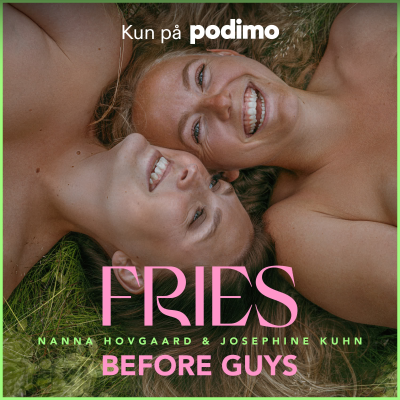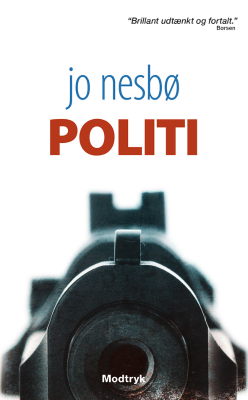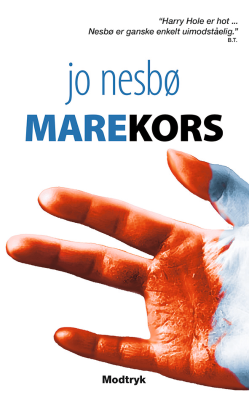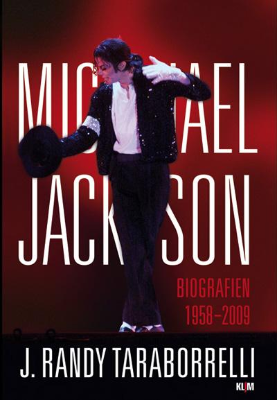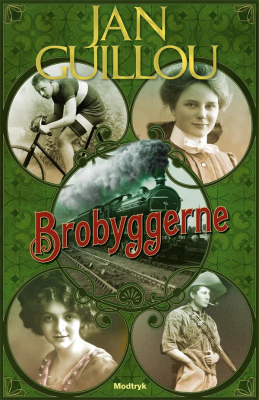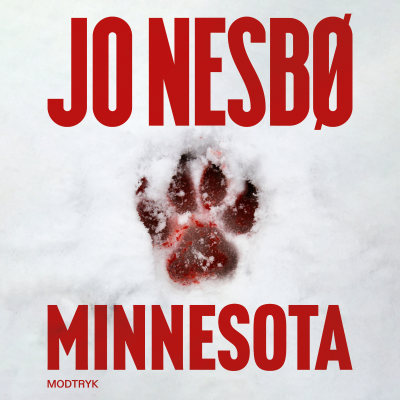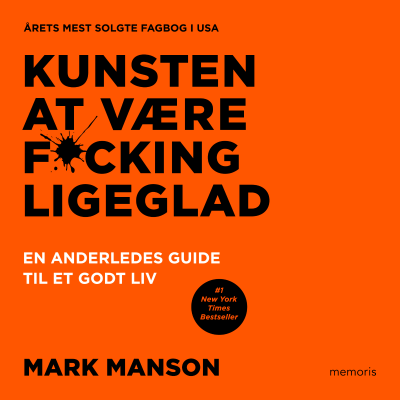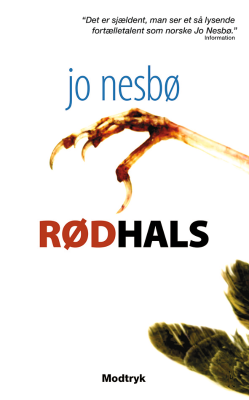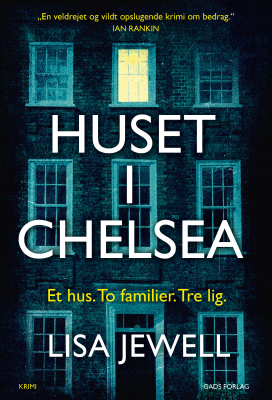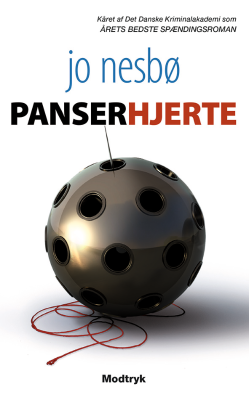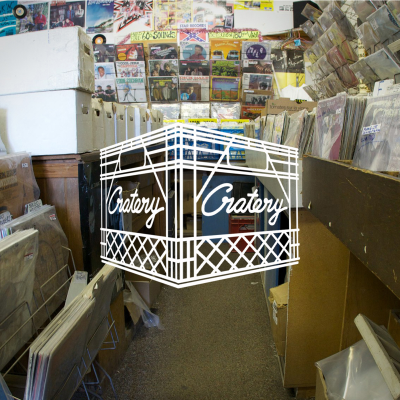
CRATERY
engelsk
Kultur & fritid
Begrænset tilbud
1 måned kun 9 kr.
Derefter 99 kr. / månedOpsig når som helst.
- 20 lydbogstimer pr. måned
- Podcasts kun på Podimo
- Gratis podcasts
Læs mere CRATERY
A Dig Diary by Arcee, Kaewonder, & Dj Serious
Alle episoder
104 episoderCRATERY 88: Mr. Attic
I first met Mr. Attic at York University’s 105.5 FM in ’95. It was my first year attending York and my favourite pastime had quickly become loitering around the campus/community radio station before, between and after classes. One of my favourite shows was called “Soul by the Pound” – a program dedicated to playing the soul, jazz, funk and rock songs that inspired the hip-hop songs of the era. Show creator Jeremy “Beatdawg” Weisfeld would blow my mind every week with source material for my favourite Pete Rock, Tribe and Large Professor songs with a level of insider knowledge I hadn’t encountered up until that point. It wasn’t long before pestering Jeremy on the phone every 5 mins for song titles turned into hanging out at the station and pestering him in person. One week I turned up and Jeremy wasn’t there. Filling in for him that week was a dude who introduced himself as Seven. He was joined shortly by an unassuming cat with a bag full of records. The gentleman introduced himself as Attic. “That’s Mr. Attic from Da Grassroots”, Seven said, chiming in quickly. Da Grassroots? Wow. I had heard of the production trio through the work they had done for Toronto hip-hop outfit Ghetto Concept, including the classic “E-Z on the Motion” which I would later find out was actually produced by Attic himself. For the next hour, I stood by the studio door as Seven and Attic killed me with records I had never heard by groups like the Nite-Liters, Delfonics, Spirit and Don Covay (I remember going nuts off the original for Pete and CL’s Lots of Lovin remix). I was rhyming at the time, so I asked for Attic’s number at the end of the show in the hopes of securing a beat from the man himself. Suprisingly, he actually obliged. It’s important to note that Da Grassroots had already developed a bit of a reputation around the city during this time period. Ghetto Concept (along with counterparts ORB and Born II Roam) were already head and shoulders above what was happening in the city at that time. And a huge part of it was due to the production provided by Da Grassroots. The local rap showcase was particularly unforgiving to rival producers when their pithy kicks and snares were easily outclassed by the warm, comforting boom of a Grassroots riddim. Ghetto was already collectively great on the mic. But the beats made them even better. By ’95, Da Grassroots had miraculously won back to back Junos with Ghetto Concept for the independently released “Certified” and “E-Z on the Motion” singles. It wasn’t long before the trio of Attic, Swiff and Murray were becoming the stuff of legend in Toronto. My first time at Attic’s crib was, well, in a single word: overwhelming. It was the first time I had ever seen that many OG records in a single place. I had been buying bootlegs and compilations trying to get more bang for my buck and here was this dude who, in my estimation at the time, had “everything”. The only people I knew that had those kinds of crates were the big U.S. producers of that era. I hadn’t seen anything like it outside of a magazine. I didn’t even own Superman Lover by Johnny Guitar Watson at the time, so seeing records like 1619 Badass Band was overkill on my 21-year-old brain. That night, Attic made a beat off a Mongo Santamaria record and I remember hoping he would give it to me. Not only did he not give it to me, he nearly deleted it. I was dumbfounded. I thought the shit was single worthy and this guy was ready to toss it away without a thought. That was telling. After nearly 20 years of friendship I can say without a doubt that Attic is his own harshest and most ruthless critic, the definition of a perfectionist. The next time I went to Attic’s place, I brought a friend of mine equally enthralled by sample mining: a budding producer I had met less than a year earlier by the name of Moss (featured on Cratery 33). We basically spent the entire night tapping Attic for sample knowledge. It was literally like typing searches into whosampled years before I even knew what a website was. Our holy grail? Learning that Master Ace’s “Brooklyn Battles” (a song we were both obsessed with) was a straight loop off Eddie Kendricks “If you let me”. When Attic dropped the needle on that one, we were rolling around on the ground of his bedroom like giddy little children. We couldn’t believe that we had a met a person that had so much of the knowledge we coveted so badly. After that visit, I gave all my compilations to a homie and began to focus on buying original pressings. Not long afterwards, Attic began taking Moss and I digging with him. That’s when I really started to learn how to shop for records. But he didn’t just put us on to records. He put us on to stores. The most important of which was Vinyl Museum’s Lakeshore location. The shit I personally saw Attic pull out of VM was crazy, so I can’t even imagine the level of stuff he was pulling between ’89-95. Back in ’95-96, trying to walk into a Toronto store looking for OG Donald Byrd and Roy Ayers LP’s was futile. The demand for those sorts of records was way too high at the time. But shopping for weird rock records, Canadian breaks and assorted sample fodder was still possible – especially in a store like Vinyl Museum, where it felt like almost everything had a $2.49 price tag. Attic taught us to gamble on these sorts of records. He took risks. That’s how he found stuff. And for 2 dollars a record, Vinyl Museum was a gambler’s paradise. It was, without question, Attic’s favourite place to dig. On one of my first visits to Vinyl Museum with Attic, I found a copy of Frank Motley’s “Let it Be” album. I knew it was Canadian and rare, and for only $5, I wasn’t leaving it behind. I told our Seattle homie Jake One about my come up and he offered to trade me for it in exchange for a shit ton of basic records I was thirsting for at the time like 9th Creation and Les McCann. For me, a beginner, the trade made complete sense. Especially since the Motley was fetching over $200 back then. $200 worth of beginner records for a college kid with limited cash and a digging habit was gold, so naturally, I made the trade. Later, Attic told me that the same Frank Motley record was a spare copy that he had traded back to the store for credit. “Oh you bought that?” he asked, surprised. When I asked him why he had traded it back, he told me the open break was “noisy”. In other words, it didn’t matter if it was rare, it was useless to him unless the was the record wasn’t sonically up to his standards. Attic would rather have his $5 back than resell or trade a noisy Frank Motley joint. Again, I was dumbfounded. Evaluating a record based on its condition wasn’t even something I had thought about. I was just happy to have the original. As a producer, Attic is as carefree as he is meticulous. Blessed with an incredible ear and cursed with an attention to detail. Democratic about his record choices. And uncompromising about the sound of the final product. Attic’s signature weapon of choice throughout most of the 90’s was Ensoniq’s EPS 16+ (although he switched to the MPC 2000 later). And with it, he made some pretty legendary contributions to Toronto hip-hop around this time. “Drama” was his (and partner Swiff’s) first single under Da Grassroots moniker. I should note that sonically, this song was much different than the majority of hip hop being released in Toronto at the time, in that the mix sounded phenomenal. It didn’t sound like a local, basement record – it sounded full bodied and well rounded. This was in part, due to Da Grassroots connection to Noel “Gadjet” Campbell, an engineer with a golden ear and future Toronto legend, who was credited with the mix. No one in the city had really achieved those sort of sonics up until that point. The warm kicks, ample snares and moody rhodes on “Drama” was a milestone because it matched the quality of the sound being achieved stateside. The single did well by indie standards back then, and was even heavily bootlegged in Tokyo to try and meet the demand of the Japanese market. Attic’s continued work with Gadjet introduced him to the next wave of Toronto rappers like Saukrates, Choclair and Kardinal Offishall, all of whom have his joints in their discography, notably the latter’s “Ol Time Killin” which is an undisputed hometown classic. Da Grassroots forged a relationship with Seattle based Conception records (through our mutual homie Jake One) to release their own production-based debut album “Passage through time” in 1999, featuring a veritable who’s who of Toronto hip-hop at the time, including a debut single featuring yours truly. I was probably one of the lesser known artists on the album, but Da Grassroots always favoured the music, not the politics. Over the years, flagship Canadian artists like the Dream Warriors, Brass Munk, Thrust, IRS, Tara Chase, Marvel and Checkmate have all added Attic pieces to their discography. But his most frequent and closest collaborator remains Mr. Roam (originally of Born II Roam), whose “Postal Work”, “Price of Living”, “Groupie Central”, “System” and ultra-limited Tom Strokes album are timeless examples of Attic’s beat prowess and some of my personal favourites from his discography. But the unreleased shit is where it’s at. The good fortune of being this man’s friend has given me the chance to be exposed to countless gems at various basement sessions over the years. And let me assure you, there are plenty. For example, many would be surprised to know that Attic has nearly an album’s worth of material with Saukrates from the early to mid 2000’s which never saw the light of day. I have heard it with my own ears and it is as incredible as an Attic/Sauks collabo sounds. The Ghetto Concept album that was to follow “E-Z on the Motion” on Groove-A-Lot records was chock full of Grassroots heat that remains in the vault. Mr. Roam had a project before the Grassroots album entitled “W.A.R (the World According to Roam)” which was produced by Attic in its entirety and never released. Nor was Roam’s “Mean Food” project that was teased on the Tom Strokes album. Rexdale representatives Redlife had a few Attic bangers on their unreleased LP. And then there’s the stash from Attic’s solo project, which was also in the works, for which numerous songs were recorded. And that’s not even counting the endless disks of random unreleased beats. Some of those beats ended up on Jeremy “Beatdawg” Weisfeld’s Deep Crates documentaries in the early to mid 2000’s when he enlisted Attic to score both films, which were dedicated to the art of digging. But it was also during this time period that the music industry was experiencing a massive shift. And with it, came a shift in Attic’s attitude towards making music. Da Grassroots album “Passage through time”, although considered a classic by many, fell short of its potential in some ways, due in part to the untimely disbanding of Conception records. It also seemed like the beat placement game had become more about hustle and less about talent. The Napsters and Soul Seeks of the world were taking a massive bite out of full length album sales and labels were trying to save money by discouraging artists from using samples. Plus, with institutions like Vinyl Museum closing, we weren’t buying records as diligently as we once were. Our focus on executing projects had dwindled. We were all jaded and kind of over the industry hype. The demand for Attic’s mentor Gadjet had become so high in Toronto that it was difficult for him to make time for every single person lobbying for his attention. All of this frustrated the hell out of Attic, whose archive of unreleased projects and seemed to be destined for eternal limbo. Like many of us who have balanced our careers and our passion for music our whole lives, when the industry failed him, he shifted his focus back to his 9 to 5. But Attic never really stopped creating. While the industry may have no longer formally been a focus, he would continue to toil away on personal projects in his Brampton basement, still using vinyl as his primary tool. One of our crew favourites was a project called “A.R.M.”(short for Add Rhyme and Mix), a mostly instrumental EP that was built around samples that didn’t require any additional drums. All anybody needed to add to the beat was a rhyme and mix (hence the title). Fingers crossed, A.R.M. may not remain unreleased for much longer. And the recent reissue of the Da Grassroots “Drama” single on 45 from Tokyo/Toronto based Chuku records could be a sign that more music is on the way. I could regale with you Attic related digging tales for days. Like the time he walked into Vinyl Museum in the early 90’s and cleaned out the Axelrod section for $2.49 per LP after the homie Roam had hipped him to the producer’s work. Or the time he walked into the same store and bought “Champ” 45 for a quarter. Or the time he found 4 perfect copies of the highly coveted “Spacing Out” LP by The Invaders at the same time for next to nothing. Or perhaps you’d like to hear about the day he came up on a S.O.U.L. “What is it” for a buck at an Ohio record show back in the late 90s. I’ve seen this dude pull so many records it might seem effortless had I not seen the endless hours of digging and numerous failed gambles first hand. Attic was definitely blessed with them golden hands. But he also put in the work. Attic was and always will be an OG to all of us in Cratery. That’s why it’s always an honour to play records with him. And that might sound a little weird, given that he’s also a close friend. But as much as he’s become a peer, for some reason we all still look on him with this enduring reverence. Before googling samples was a thing, we had Attic. Before sourcing your drum sounds off a web site was a thing, we had Attic. I don’t even know if I’d be digging this much if I didn’t go to Attic’s house in the early days. It was only then that I understood that having an amazing collection of original pressings was even possible. He was this seemingly endless reservoir of beat knowledge and we were all thirsty for anything break related. I remember walking through Vinyl Museum picking up records and bothering Attic: “Anything on this man? Is there a beat on this? What about this one?” I’d ask, expecting my more knowledgeable homie to put me on. “If I tell you everything, how will you develop your own instincts?” he would respond. “So you’re just gonna let me buy this wack record even if you know there’s nothing good on it?” I’d rebut. “Yep” he’d say, as he’d walk to the counter. “It’s called learning”. –ARCEE Subscribe on iTunes [https://itunes.apple.com/ca/podcast/cratery/id580278924] Stream: https://media.blubrry.com/cratery/CRATERY.com/AUDIO/Cratery_88_featuring_Mr.Attic.mp3 [https://media.blubrry.com/cratery/CRATERY.com/AUDIO/Cratery_88_featuring_Mr.Attic.mp3] The post CRATERY 88: Mr. Attic [https://cratery.com/2018/03/arcee-kaewonder-dj-serious-cratery-88-featuring-mr-attic/] appeared first on CRATERY [https://cratery.com].
CRATERY 87: David Axelrod tribute
David Axelrod would have probably scoffed at this tribute. He would have likely criticized the theme. Pointed out why these selections weren’t worthy of spotlighting. Reminded us why certain sessions were nightmares. Questioned the order of the track list. Told us which songs he got fucked on royalties for. And likely chastised us for over analyzing his life’s work. The truth is, we’d give anything to be berated by the man simply known as ‘Axe’. Because that would mean he’d still be here. Rest in Peace, Mr. Axelrod. Thank you for the music. And the honesty. –ARCEE Subscribe on iTunes [https://itunes.apple.com/ca/podcast/cratery/id580278924] Stream: https://media.blubrry.com/cratery/www.CRATERY.com/AUDIO/Cratery_87_David_Axelrod_tribute.mp3 [https://media.blubrry.com/cratery/www.CRATERY.com/AUDIO/Cratery_87_David_Axelrod_tribute.mp3] The post CRATERY 87: David Axelrod tribute [https://cratery.com/2018/02/arcee-kaewonder-dj-serious-cratery-87-david-axelrod-tribute/] appeared first on CRATERY [https://cratery.com].
CRATERY 86: The Brazil Episode
One of the simple pleasures of being a rap fan is the passionate level of debate and analysis you can engage in with a fellow nerd at any given moment around any given album – old or new. I definitely don’t have the same debates around Brazilian music. I rarely subject my favourite vintage records to the same level of scrutiny that I subject the music I grew up with. And the reason is simple, really. Being a first-hand witness to the rise and popularity of hip-hop culture gave me context for the significance of most records that came out during a certain era. A new rap fan might still have an appreciation for Ice Cube’s “Death Certificate” but without an understanding of N.W.A’s “Fuck the Police”, the Rodney King video or the rising level racial frustration in Los Angeles in the early 90s, some of the album’s impact might be lost. Some of us can debate the importance, significance and impact of certain records from the 90s because we were there. I can’t do that with Brazilian music from the 70s because I wasn’t there. I can certainly google Jorge Ben, Elis Regina, Azimuth or any of my favourite musicians from that era but I’m essentially relying on a simplified Wikipedia-like lens on history to give me my context. And that’s just not ideal. So my connection to the music of Brazil is based on a very simple criteria: energy. Good energy to be specific. It’s an energy I’ve connected with from the moment my father played “Chove Chuva” by Sérgio Mendes and Brasil ’66 on his Dual CS-506. And it’s an energy I connect with every time I hear the music of Gal Costa, Luiz Eça or Banda Black Rio emanating from my speakers. There’s something about Brazilian music that just makes you feel good. The moods, melody, the orchestrations, the arrangements. There’s a reason all three of us have Brazilian records in our collections. And maybe even more in our wantlists. That good energy. You don’t need to speak Portuguese to appreciate it. Hell, we’re just happy it’s around to appreciate. You could probably sum up our feelings on Brazilian music with one word: Obrigado. –ARCEE TRACKLIST 1. Lo Borges – Tudo Que Voce Podia Ser 2. Dom Salvador – Guanabara 3. Gilberto Gil – 2001 4. Jorge Ben – O Homem da Gravata Florida 5. Gal Costa – Vou Recomecar 6. Wilson Das Neves – Jornada 7. Azimuth – Faca de Conta 8. Waltel Branco – Jael 9. The Bossa Tres – Zelao 10. Tim Maia – Primavera 11. Wilson Simonal – De Noite, na cama 12. Joao Donato – A Ra 13. Milton Nascimento – Cata Vento 14. Tamba 4 – Zazueira 15. Sivuca – Inquietacao Subscribe on iTunes [https://itunes.apple.com/ca/podcast/cratery/id580278924] Download It Here! [https://media.blubrry.com/cratery/www.CRATERY.com/AUDIO/Cratery_86_The_Brazil_Episode.m4a] (right click > Download Linked File As…[Mac] / Save link as…[Win]) Stream: https://media.blubrry.com/cratery/www.CRATERY.com/AUDIO/Cratery_86_The_Brazil_Episode.mp3 [https://media.blubrry.com/cratery/www.CRATERY.com/AUDIO/Cratery_86_The_Brazil_Episode.mp3] The post CRATERY 86: The Brazil Episode [https://cratery.com/2017/07/arcee-kaewonder-dj-serious-cratery-86-the-brazil-episode/] appeared first on CRATERY [https://cratery.com].
CRATERY 85: Mastersihn
It’s funny to think I wouldn’t be typing these words right now if Kaewonder hadn’t asked me the question “Do you follow that dude @mastersihn on Instagram”? We’ve met a lot of good people online, and with a common love for good records and good smoke, Philly’s Mastersihn is definitely one of the good ones. We connected for the second time when he drove up for last year’s epic Live Convention weekend. Naturally, a Cratery episode and interview were in order. Episode audio below. I realized you were a true record nerd when you broke down the origin of your name. Mind sharing it with our readers / listeners? So the name is a nod to one of my favorite movies growing up “La Planete Sauvage”. I caught it on public access TV late night in my teens. Coming home all fucked up and finding that shit on TV was a real mind fuck. The movie and the music had huge impact on me and when I got into records it was one of the first grails I was after. I got lucky and caught a copy very early on and to this day I still consider it my favorite record of all time. The name is a play on one of the adult Draag characters in the movie who was part of the famous trippy meditation scene. I need to get a proper copy of that flick for the files, man. When did you start buying vinyl? What kind of stuff were you buying when you first started? Grew up listening to my Pops’ records and because of the generation I was in when I first started buying music for myself it was on cassette. It wasn’t until I was around 14 that I discovered the train downtown and the magic of hip hop 12″ singles. Then came jacking my Pops turntable followed by a second (direct drive) turntable and the Gemini “scratchmaster” mixer. Funny I had a similar start. Straight cassettes. Particularly because I took the bus everywhere and I needed my music to be Walkman friendly. I feel like there was a point when my taste began to mature a little and I wasn’t necessarily chasing the same exact records I was after when I started. Did you experience a similar shift? [Laughs] Honestly, I’m real slow to mature, so I’m still chasing the kind of shit I was when I first started in some regards. For example: a wicked drum break still gets the juices flowing even though I have thousands already and highly doubt I’m going to make super producer status anytime soon. So basically, if there was any shift it was towards really good records that I don’t have to get up off the couch after one track and change. But that could be an indication of getting old and lazy more so than my musical taste maturing, I dunno. You and me both [laughs]. That’s kind of the impetus behind Cratery to be honest. But I’m still hip-hop. I just bought a monster break on the weekend. I guess that never goes away. Your hometown spots like Funk-O-Mart are the stuff of legend. What was it like digging in Philly back then? One of the most amazing, life-changing discoveries for me in my early teens was the train into the “Gallery” mall downtown. You could get off the train in the basement of the mall, come up, fuck around in the mall, buy gear and shit, then when you hit the streets the real fun began. Philly in the early 90’s was off the fucking chain! Wild shit going on everywhere from street vendors selling bootleg everything, from music to what ever the fashion trend at the moment was and people hustlin’ everything everywhere. 3 card monte, weed, women, fake jewelry – you name it. When you came out of the Gallery you would come up on Filbert Street and walk right across the street to Armand’s records. Then after that you walk 1 block down to Market street and hit Funk O Mart. When you were done there, you’d walk half a block back down to 11th and hit the Sound Of Market. I called it the vinyl triangle. I was always operating on slim funds (usually saved up lunch money) so if I had anything left by the time I got to the third shop it was a miracle. Sadly, I didn’t make the most of my time and money in those shops cause at the time I remember seeing all the local indie rap shit on the shelves and laughing like “yo who’s wasting their money on that shit when you could get this new Craig Mack 12″!!!” Also I’m sure all three shops were packed to the gills with all the indie boogie and modern soul and gospel that goes for crazy loot these days. When you were in town for our Live Convention show back in November, you talked a little about the competitiveness to get records in Philly even for the average digger – and how Toronto seemed more casual in that respect. Can you expand on that? Nowadays, Philly is a very strange place to buy records. They’re here but everybody knows that we’re a huge destination for anybody who’s really on this record shit and it’s been that way for way longer than I’ve been in the game. It hasn’t tapered off a bit over the years, really. We’re talking well over thirty years of people coming from all over the world with the single goal of extracting the city’s natural vinyl resources and most of them come a few times a year. So that’s taken a major toll to the point where there are lots of private press Philly records that don’t show up in the city at all anymore and you have a better chance getting them from sellers overseas. That, combined with the awful store situation we have here. They’re almost all basically buying fronts for eBay and discogs. It’s like it was a reaction to so many people coming here to buy that all the stores got greedy and went the same route. You know the look on the face of a record store owner when they see another dealer gripping their stuff up without hesitation they get that look of panic in their eyes like “Oh no, I’ve made a mistake”. Next thing you know, all the new arrivals are getting listed on discogs for crazy prices and only make it to the shop if they don’t sell online. My beef is you set up a store in a community to service that community and of course make money while doing it, not taking advantage of a community and then denying any actual real collectors in the city a shot at stuff because of the hope you can squeeze a couple extra bucks out of it online. Sure in the short term you could probably make a few extra dollars online but that person isn’t coming to your store and buying other shit while he’s there to grab that record and he’s not telling their friends who come into town “yo you need to check out his spot!”. If you want to sell online, close your shop run an ad in the paper and don’t waste my time coming in your shitty shop with the same stale bins and permanent wall display just so you can show me the good shit you got behind the counter that your listing online. Seriously go fuck yourself!!!!! In Toronto, you have more of a sense of pride in the community especially with Aki and Cosmos setting the bar for how a store should be run in this new internet age. By all means, use the internet to get business but drive that business into your shop. That’s how good things start to happen, people make connections, exchange information, bring in good records to trade etc. Some might see our little niche record community on Instagram like a new kind of Soul Strut. It’s a place where likeminded heads follow each other and share music and even sell records. Some folks are divided over whether or not social media has been good for record digging. Some complain that nothing is a secret anymore and others complain because it’s turned into a dick show where everyone’s flossing rares for likes. We certainly connected over Instagram so it can’t be all bad. What are your perspectives on record digging and social media? Has it changed or influenced the kind of music you’re buying or how you buy it? Instagram is a totally new experience for me. I was a small-time lurker on the Soulstrut board, never making the leap to actually interacting with people. I’d never done anything social media related until I figured out that a local record spot was selling all their good shit dumb fast cause they were posting it on something called Instagram. People were snapping it up before it even hit the floor, but the owner was being smart about it and not shipping – so he was still driving business into his shop. That got me motivated to check the thing out and it’s been a real game changer. It’s a double-edged sword of sorts. On one hand, it’s totally amazing to be connected to likeminded people from all over the world, but on the other, you’re going to be exposed to a lot of shit you don’t condone and just shitty human behavior in general. The biggest problem that can’t be ignored is that there has definitely been a shift to some people feeling overly entitled to everything from knowledge to records and even personal relationships. We came up where all those things were a slow gradual process that at times sucked, and you wished you could bypass, but that’s what you had to do to pay your dues. Now we want it all immediately, myself included, so I try to remind myself of that daily. All that said, I try to focus on the positive aspects like linking up with good people like you guys and all the knowledge and records I’ve gained over the last few years. It’s really amazing and not something I take for granted. That’s why I try to “add on” as much as possible and not just get caught up in the record equivalent of a dick measuring contest. It’s definitely changed the way I dig because we now have a whole new option that can be an unexpected source of info at any given moment of the day. As far as my tastes I’m pretty locked in in to what I like. My tastes are broad, but the common theme has always been hip-hop – that’s were I come from and those are the lenses I look at the world through. I’m attracted to all things I think have a hip-hop aesthetic to them and I find that in the strangest places. That lets you know that hip-hop is a movement that’s nothing new and began a long time ago, not just with the invention of “rappin”. I just don’t think it had a name for a while. A lot of us hip-hop dudes fell in love with library records because they sounded like rap records. Share 5 of your favourite libraries and tell us why. Yeah library was just starting to hit when I got into collecting in the late 90’s. I was lucky and met a record dealer who was making it a priority to find these things. He was mailing post cards and going to all the production houses on the east coast and cleaning them out long before anybody caught on to the value of them. Unfortunately, he was a bit of a star fucker and was selling them to all the NY producers mainly the DITC contingent so my nobody “little dude” ass was only getting to buy the scraps that those guys left behind (they didn’t leave much behind), but I did get to see and hear a lot of them before they bought them. So while my collection wasn’t expanding like I’d hoped, I was gaining a ton of knowledge on which labels and titles to look for. So now many years later I’ve managed to track down a lot of that stuff and some of my favorites would be: 1. Hanged Man OST (technically a soundtrack) it was originally released in two parts on the Themes label as Drama Suite 1&2. You can get pretty much the whole thing on one record for around $30. Really tough to beat that one. 2. John Cameron – Afro Rock. One of the best records from one of the best library labels. There are tons of great KPM titles I could pick but that’s one of the most consistent. 3. Nick Ingman – Big Beat. One of the De Wolfe labels most epic contributions (that’s saying something, they have a lot to offer) to the library world is matched with one of the most eye grabbing covers of all time with an elephant swinging a hammer for a trunk. 4. Sea Fantasy – Armando Sciascia on the Italian Vedette label that was actually owned by Sciascia. This is a great and possibly my favorite example of the “underwater” style of library music that has become so popular as of late. 5. Philopsis – Freesound A crowning achievement of weirdness from one of my favorite library men of all time Jacky Giordano. I know brother Kae would agree with me on this one, it’s just the perfect combo of bizarre yet somehow funky sounds and patterns. Not to mention the recording/mixing/mic-ing of everything on the Freesound label is next level. Like all of us at Cratery, you share a mutual love for weed and wax. Has smoking before digging ever affected your judgment in a questionable way? Burning trees been a daily operation for over twenty years so I’m not too affected as far as buying goes. It would probably have a bigger effect on me if I hadn’t burned something beforehand. Like I would be rushing and not taking my time and being thorough and miss something I would have caught if I was in a better state of mind. It’s definitely a tool in my arsenal, you can put me in the worst most unsettling of situations, negative 10 degrees in a shitty, moldy basement with rats running around, as long as I burned something beforehand and I’m finding records I don’t need shit, I’m good money! I’ve got to confess though I do love taking my homie Tripledouble out on a dig and getting him all roasted and then he thinks everything sounds great on the portable and then when we get back to the spot and he’s like “why the fuck did I buy this?” “Damn you got me too high again” [Laughs]. [Laughs] I’d be lying if I said I didn’t fall victim to that too. Most of my friends consider me a huge rap fan but whenever I encounter one of your indie rap posts on Instagram, I’m positively dumbfounded at the level of random rap shit I’m not up on. Like most of us reared on major label rap, we’re familiar with the Steady B’s, the EST’s, Black Thoughts, Beanies and Freeways of Philly. Who are some of your favourite overlooked Philly MC’s or groups? Awesome question, you’re really fucking good at this. Ok, so if there is one thing I’m passionate about above all others it’s Philly rap. Particularly the indie side of things that I totally overlooked as a kid. The amount of it is absolutely staggering, coming up I thought I was deep and had a handle on things, cause I knew about the Roots, 100X and Ram Squad. I could literally write a book on this subject now though, so for time’s sake I’m just gonna drop one dudes name who made two of my favorite records. He’s a buddy of mine who now goes by DJ Nicky But back in the day, he was one of the sickest MC’s in the city and he recorded two records that I’d put up against anything you can think of from the period major or indie. First record was a 12″ under the name 24-7 and the Hoodfellas and the song is called “Let’s Have It” released in ’93. A year later, he released another 12″ under the name The Bang Bang Poet with two tracks: “Unbelievable” and “Here Comes The Bang Bang Poet”. I mention these not only because I like them but because I know that your (Arcee’s) favorite rapper of all time is Black Thought. Listen to these two records and keep in mind that Tariq (Black Thought) is originally is from South Philly. In the early 90’s, before the Roots blew up, Riq was hanging out uptown a lot in the West Oak Lane section of the city where Nicky Butters is from and they would see each other and battle with the vocabulary quite often. Now don’t get me wrong, I’m definitely not insinuating that Riq stole anybody’s style but I think the style of rhyming that most people would credit him for is more of an uptown Philly style than anything else, so I’d say his time uptown had a big effect on the style he’d eventually unleash on the world. You’d probably have to be from here to understand it but different sections of the city had their own styles that varied greatly from the next. The West Philly style is the most obvious and easy to tell cause of the huge success of Fresh Prince and the Hilltop crew. I guess New York is the same in that regard with each borough having their own flavor. Wow. Appreciate the insight. It’s crazy to me that there isn’t a real proper document on Philly rap. The city has such a huge contribution to the culture and it’s still overlooked today. That book is starting more and more to sound like a good idea. Most days I’m out looking at stuff, it’s pretty par for the course. No insane come ups, but some nice deals if you’re looking. But on the odd occasion, the digging gods can be particularly generous. Give us a story behind one of your most epic finds. I’ve found over the years that your best bet is to just be as consistent as possible. If you’re going to half ass it, you’re never going to get that good haul so when I do something I tend to get religious about it. You can’t just hit that spot every once in awhile, you’ve got to hit it everyday. You have to be there early, be willing to unload trucks bring shit out from the back room – whatever it takes. All the years I’ve been digging, I never had a big library come up until one day a couple of years ago at a thrift spot I hit daily that honestly doesn’t give up enough to warrant a daily stop but it’s close enough to me so I always try to make the time. One day I get there right as they open and there is a shopping cart with records sitting in front of the shelves waiting to be put out, normally the cart would be full of Sergio Mendes and Firestone Christmas records but this day the whole thing was library records. Nothing super expensive but it was about forty solid Bruton and Sonoton label titles that were all super clean and for the .75 cents a piece I paid it was one of the more satisfying grabs of my life. More so because I’d always hoped to luck up on some library in the field and my persistence had finally paid off than anything else. –ARCEE Subscribe on iTunes [https://itunes.apple.com/ca/podcast/cratery/id580278924] Download It Here! [https://media.blubrry.com/cratery/www.CRATERY.com/AUDIO//Cratery_85_featuring_Mastersihn.m4a] (right click > Download Linked File As…[Mac] / Save link as…[Win]) Stream: https://media.blubrry.com/cratery/www.CRATERY.com/AUDIO/Cratery_85_featuring_Mastersihn.mp3 [https://media.blubrry.com/cratery/www.CRATERY.com/AUDIO/Cratery_85_featuring_Mastersihn.mp3] The post CRATERY 85: Mastersihn [https://cratery.com/2017/06/arcee-kaewonder-dj-serious-cratery-85-featuring-mastersihn/] appeared first on CRATERY [https://cratery.com].
CRATERY 84: Supreme La Rock
My first real glimpse of Supreme La Rock was not in person. It was through a wantlist of records given to my friend Moss, via our mutual homie Jake One around ’95. Supreme had instructed Jake to tell his new Canadian counterparts to be on the lookout for some titles and send them his way if we encountered any. The list had records like: Stark Reality Power of Zeus Les De Merle – Spectrum Moody – Gentle Rain Wayne McGhie First Gear Turner Brothers Supreme’s wantlist was basically the stuff of folklore to me. I had never heard of The Gentle Rain, Stark Reality or Turner Brothers. These weren’t the type of records you’d find openly listed on sample credits. They were too heavy for the Luv N Haight/Ubiquity comps of the time. And you most likely wouldn’t find them in the average Toronto record store back then. The records on that list were my first glance into a world much deeper than the one I was digging in. A world extremely far away from CTI records and Tommy Roe drum breaks I was catching in the field. I mean, shit. I was probably still looking for a copy of Ronnie Laws at that point. I had never met Supreme and his wantlist had already made him the stuff of legend. That was before his partnership in the Seattle indie label Conception Records. Before his seminal break series with Jake One as the Conmen. Before being featured in issue #1 of Waxpoetics. And long before you some of you wetmouths were asking him about unlisted breaks on his Instagram. When we spoke on the phone, you mentioned buying Blair’s “Night Life” in 10th grade. Give us some examples of the early pieces you picked up before they became “grails”. I picked up Baby Huey & the Babysitters, Jimmy Castor Bunch, Incredible Bongo Band, Headhunters, Bob James all in the mid 80’s not necessarily “grails” but classics. Also, S.O.U.L, Billy Brooks, Faze O, Meters, etc. around ’91. How did you develop such a large base of knowledge at such a young age? Were you working in a store? Did you have an OG pass on knowledge to you? Growing up in the Pacific Northwest, you weren’t exactly in the South Bronx. Where did this knowledge come from? A lot of it wasn’t knowledge. Of course, joints like Jimmy Castor, Bongo Band etc. were already certified hip-hop break beat classics at that point but as for the other stuff a lot of trial and error. I was buying records that looked “cool” or noticing who produced it. This was pre-internet, you learned by listening. Louie Lou, T La Rock’s DJ told me about Octopus breaks when they performed in Seattle in the late 80’s so I tried to track those down and ended up talking to Lenny Roberts of U.B.B fame. He would send me lists of original records he had for sale. He already did the digging for you, and knew his stuff, so I’d buy things I didn’t even know because you knew they’d be good. He wasn’t listing anything that wasn’t funky or had breaks on ’em. Also started to do trades with Jazzman Gerald in the U.K. who put me onto a lot of great foreign records and Beni B (ABB records) who I randomly met one day while out digging. He put me onto tons of titles. I never worked in a shop until around ’96 and it wasn’t for long. The main list I used was in a book. Maybe Steven Hager’s “Hip Hop” but can’t remember for sure. There was a book that listed the top classic hip hop breaks so I used that as a guide until I acquired them all and crossed off the entire list. We’re from a generation that was reared on secrecy. Knowledge was coveted. Thanks (or no thanks) to technology, record knowledge is much more accessible than it used to be (although no one can know or have everything). What are your thoughts on digging in a post-Internet world? The thing that totally sucks about digging post-Internet is shops and dealers jacking up prices. Sure, there’s someone in the world willing to pay x amount for the record hence the reason it’s sold for that price in the past but with that being said doesn’t necessarily determine market value so it’s really thrown the whole pricing of records off. Not every record is or should be a $100 record. It really sucks to go out to a shop and ALL of their good records aren’t even out because they’ve hidden them in the back to sell online. Why even have a shop? Almost all secrecy about records is gone, but there’s still some out there. It’ll never end. It feels like most of the digging “rules” we grew up with have been thrown out the window. I remember hearing things like “don’t sample any drums after ‘79” and “only sample original vinyl”. Even though there aren’t any steadfast rules today – are there any you still choose to subscribe to? The only rule I stick to in 2017 and beyond is there are no rules. The Conmen mixes were like a bible to many of us. From the selections to the way they were put together, it was unprecedented. Funky records, rare and common all together in one place. The intro to “The Masters” where you mention the infamous “Giant for McCluskey” trade even became someone’s user name on Soul Strut. Why do you think those mixes were so influential? Conmen mixes were influential for a few reasons. Hardly anyone was doing them at that time. I used to make mixes like that on the regular just for myself to listen to at work to inspire myself to make beats. I was doing regular song mixtapes and selling them but never thought of selling a tape with 3 seconds of a record on it I thought no one would want to hear that. Jake (One) was the guy that suggested we do a tape like that and put it out. As far as selection goes, we had stuff that was sampled and been used already and stuff that hadn’t, but we both had the ear for a good loop or a good groove. I had tons of drum breaks no one had used yet, so mix that all together and heads that produce were easily influenced. We even heard people were sampling straight from our tapes they didn’t even have or know what the original record was. That’s crazy. I never knew that was going on. I was actively trying to find some of those records and it wasn’t easy so if you’re sampling off a mixtape I can only imagine how difficult it would be for some folks to find that shit. And it’s not any easier today. Nowadays, with Internet pricing, it’s harder than ever to catch record stores slipping. But you’ve still had your share of legendary come ups over the years. Share a few times where you had to keep a poker face at the counter with a rare piece in hand. I hit a store once that had just scored a decent collection and the dude running it was kind of a wanker so I knew he was gonna gouge me on pricing if he’d even sell any of them to me. To my luck he was going on his lunch break so I pillaged through the boxes as fast as I could and asked the younger brand new clerk if I could buy them? She said sure they’ll be $2.99 each! I cashed out as fast as I could and dipped before homie got back from lunch. Also, recently a clerk was told to look up the prices on discogs to price my stack. The good thing is he had absolutely no idea what he was doing and was putting re-issue prices on original pieces. You’re infamous for “having it all” despite the fact that we both know that’s impossible. What’s an example of a record that’s eluded you no matter how hard you’ve tried to find it? I’m not going to give that title up because I don’t have it yet. Sorry. But yeah I far from have everything. I think there’s around 3 thousand titles in my discogs wantlist. Let’s take it to the hometown for a second. What’s your favourite Seattle record store, past or present? Best record store in Seattle was probably Platters ran by Gary Delmaestro. He catered to DJ’s, specialized in 12″ disco singles but had tons of great 45’s soul x funk lps as well. Give us 5 essential Seattle breaks. 1. Dennis the Fox “Piledriver” 2. Cross Winds “Fools Journey” 3. Springfield Rifle “Keep Loading” 4. Great Pretenders “Hand Jive” 5. Happy Daze “Monday Work Song” You’re well over 30 years into collecting vinyl, toys, clothes, sneakers and everything in between. Like you, as we continue to acquire more and more, we’ve been wrestling with the idea that all this stuff has to mean something. It can’t just be a bunch of stuff. Have you ever thought about what will happen with your collection when you’re no longer here? What’s the endgame with buying all this stuff? I think it just means I’m a weirdo. (Laughs) It’s all going to my son. I hope he sells it all to new happy homes and invests the money wisely. –ARCEE Subscribe on iTunes [https://itunes.apple.com/ca/podcast/cratery/id580278924] Download It Here! [http://media.blubrry.com/cratery/www.CRATERY.com/AUDIO/Cratery_84_featuring_Supreme_La_Rock.m4a] (right click > Download Linked File As…[Mac] / Save link as…[Win]) Stream: http://media.blubrry.com/cratery/www.CRATERY.com/AUDIO/Cratery_84_featuring_Supreme_La_Rock.mp3 [http://media.blubrry.com/cratery/www.CRATERY.com/AUDIO/Cratery_84_featuring_Supreme_La_Rock.mp3] The post CRATERY 84: Supreme La Rock [https://cratery.com/2017/04/arcee-kaewonder-dj-serious-cratery-84-featuring-supreme-la-rock/] appeared first on CRATERY [https://cratery.com].
Vælg dit abonnement
Begrænset tilbud
Premium
20 timers lydbøger
Podcasts kun på Podimo
Gratis podcasts
Opsig når som helst
1 måned kun 9 kr.
Derefter 99 kr. / måned
Premium Plus
100 timers lydbøger
Podcasts kun på Podimo
Gratis podcasts
Opsig når som helst
Prøv gratis i 7 dage
Derefter 129 kr. / month
1 måned kun 9 kr. Derefter 99 kr. / måned. Opsig når som helst.









